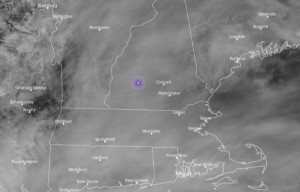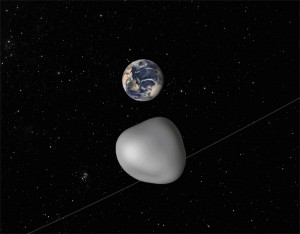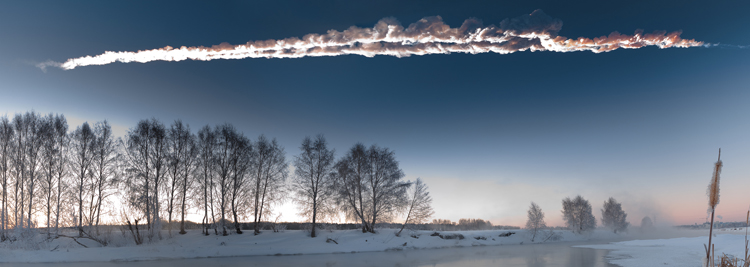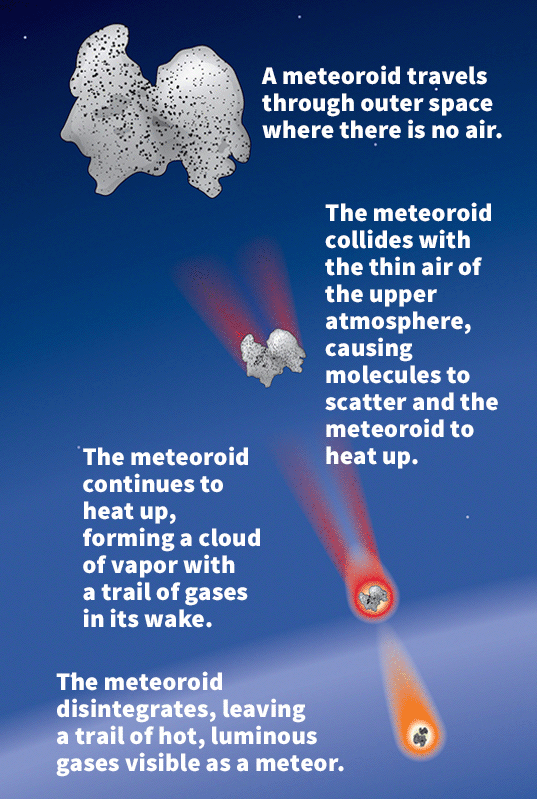Baffling Boom Shakes New Hampshire
Friday, October 15th, 2021
An image captured by the GOES-16 satellite shows a flash (purple) most likely caused by a bolide (exploding meteor) over New Hampshire on Oct. 10, 2021.
Credit: NOAA
A mysterious boom rattled houses, shook the ground, and frightened pets in southern New Hampshire around 11:30 a.m. on Sunday, October 10. Curious people in the Granite State took to the internet to find the cause. Was it an earthquake, an aircraft, a single thunderclap, a spaceship, or a meteor? There was nothing in the news about it, so one observer called the fire department, which also did not have any answers. Around 400 residents shared their observations on volcanodiscovery.com, an online forum where people report seismic activity (vibrations from earthquakes). What caused the boom?
While earthquakes do occur in the area of New Hampshire, the United States Geological Survey announced that there were no earthquakes in all New England on Sunday. The Geological Survey is a federal agency tasked in part with monitoring such hazards as earthquakes and volcanoes.
Ruling out an earthquake, many people kept researching. One cause of confusion was that even though there was an audible (able to be heard) boom and physical thud, there was no damage reported. Was it a powerful military plane? The Federal Aviation Administration announced there was no unusual military flight activity over the state. One concerned resident theorized that the sound came from the recently established New Boston Space Force Station, previously an air force base.
Meteorologists said the mystery blast was most likely a sonic boom caused by a meteor. A meteor appears when a piece of matter enters Earth’s atmosphere from space at high speed, causing it to heat up. A fireball is a meteor that burns brightly as it plunges through the atmosphere. If the fireball explodes at the end of its path, it is called a bolide.
Greg Cornwell, a meteorologist for the National Weather Service, said that a suspicious spot appeared in images from the weather satellite GOES-16, which in part maps lightning strikes, around the same time people reported the boom. Weather satellite images generally pick up storms and other weather patterns. Although it was overcast that morning, there were no thunderstorms to explain the blip. Bolides and fireballs have in the past appeared as false storms in satellite images. Cornwell also explained that this time of year is known for meteor showers.
Many experts considered it likely that a meteor explosion produced the mysterious boom. However, to officially pin the blast on a meteor, scientists need a direct eyewitness account or video evidence. No solid eyewitness account or video evidence has been brought forward, so residents may have to settle for a hunch.







